We watched the chaos from our living room.
Orange is the New Black was ending when Michael saw the first tweets:
Michael: “Someone got shot at the rally downtown.”
Me: “Someone?”
Michael: “I think it was a cop. Or two.”
Me: “Oh god, this is going to be ugly.”
We spent the next few hours on Twitter and eventually started watching Facebook livestreams on the TV.
The Black Lives Matter march in downtown Dallas ended with a sniper firing into the crowd. All of the Dallas media outlets had a presence downtown, and everyone in the march had a smartphone, so we immediately got footage of the chaos.
It was like watching one of those “found footage” disaster movies – There were videos of gunshots, screaming crowds, and fallen policemen. But the live footage prompted more questions: How many people were dead? One sniper or three? Someone mentioned bombs. Are there really bombs? Are my new coworkers from the newspaper okay?
The local TV stations had to scramble to keep up with the pace of social media. At one point, a local news anchor just pulled up Tweetdeck and started reading tweets.
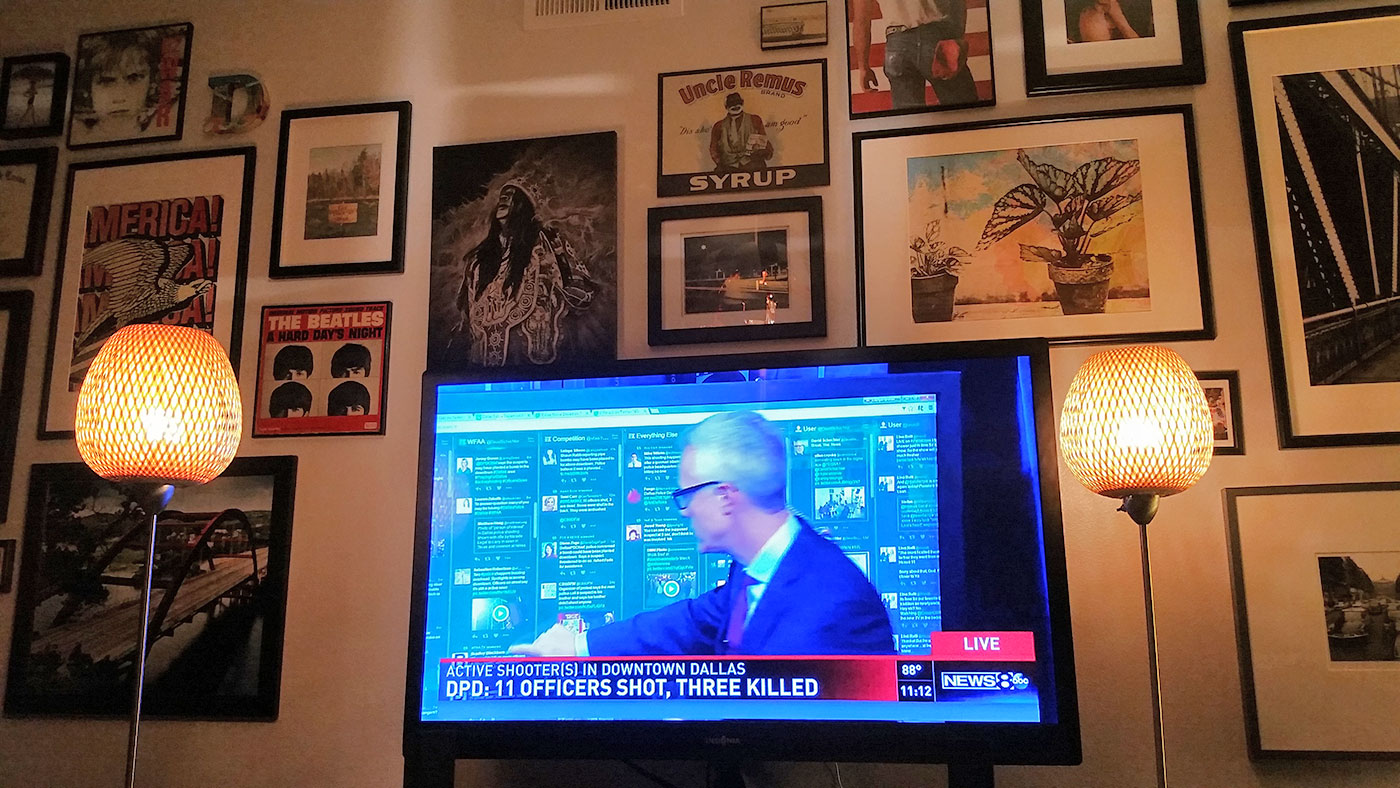
A news anchor pulling up Tweetdeck on live TV. Note that one of the columns says “competition.”
Your access to information depended on the strength of your Twitter lists, and it was apparent that the traditional TV outlets were hopelessly behind.
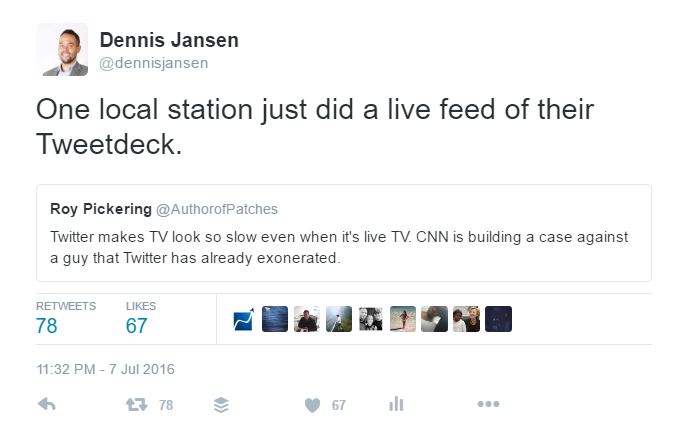
News stations struggling to keep up with social media.
National broadcasters were even worse.
The Man with the Rifle
At one point, the Dallas Police Department tweeted a picture of a “person of interest.” The picture was a young black man holding a rifle while marching.
The picture immediately raised red flags because the police said that the sniper fired from a building (not the street). Also, people who legally open-carry don’t typically start firing at cops.
Within minutes, we confirmed that the police suspect was not the shooter – The Dallas Morning News posted a video which clearly showed this man among the crowd during the shooting. A girl then uploaded a video of the man with the rifle walking behind her during the entire march.
He was clearly not the shooter, but TV stations like CNN kept reporting the man’s photo long afterward. People on Twitter became concerned that he would be mistaken as the shooter and killed.
It turns out that the man with the rifle did the sensible thing – he handed his rifle to a cop and turned himself in. The ironic thing was that in this event, having a rifle actually endangered his life by making him look like a criminal.
Livestreaming Crime
The march was in response to the shootings of Philando Castile in Minnesota and Alton Sterling in Baton Rouge.
People across the country were outraged, and Beyonce even crashed a congressional locator site by referring too much traffic.
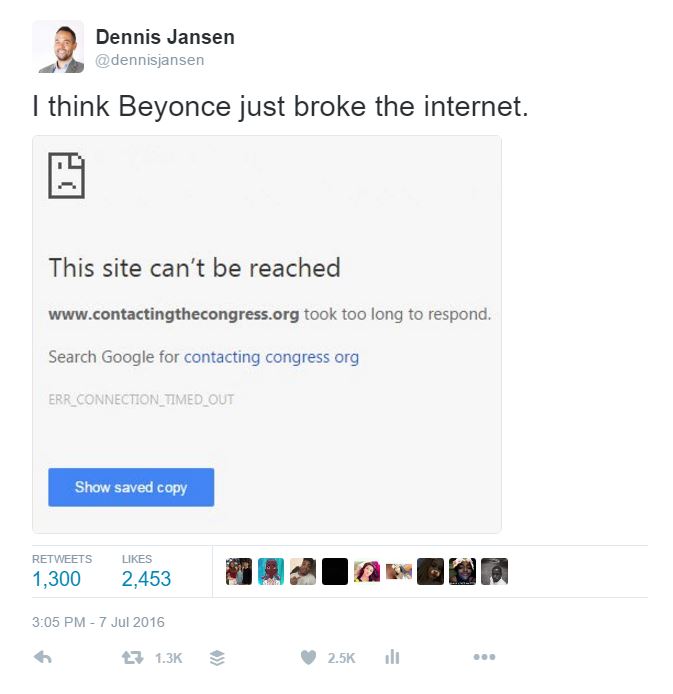
Beyonce breaking the internet after police shootings.
The Baton Rouge killing was similar to the many other police shootings that we’ve seen recently – a grainy video of police killing a black man. (Although a far more graphic video came out later.)
The Minnesota video was different because it was gory 10-minute Facebook livestream narrated by Philando Castile’s girlfriend as he died. The livestream resulted in spontaneous protests in the Twin Cities and a swift response from Minnesota governor Mark Dayton. The governor surprisingly threw the police under the bus, but probably prevented a riot.
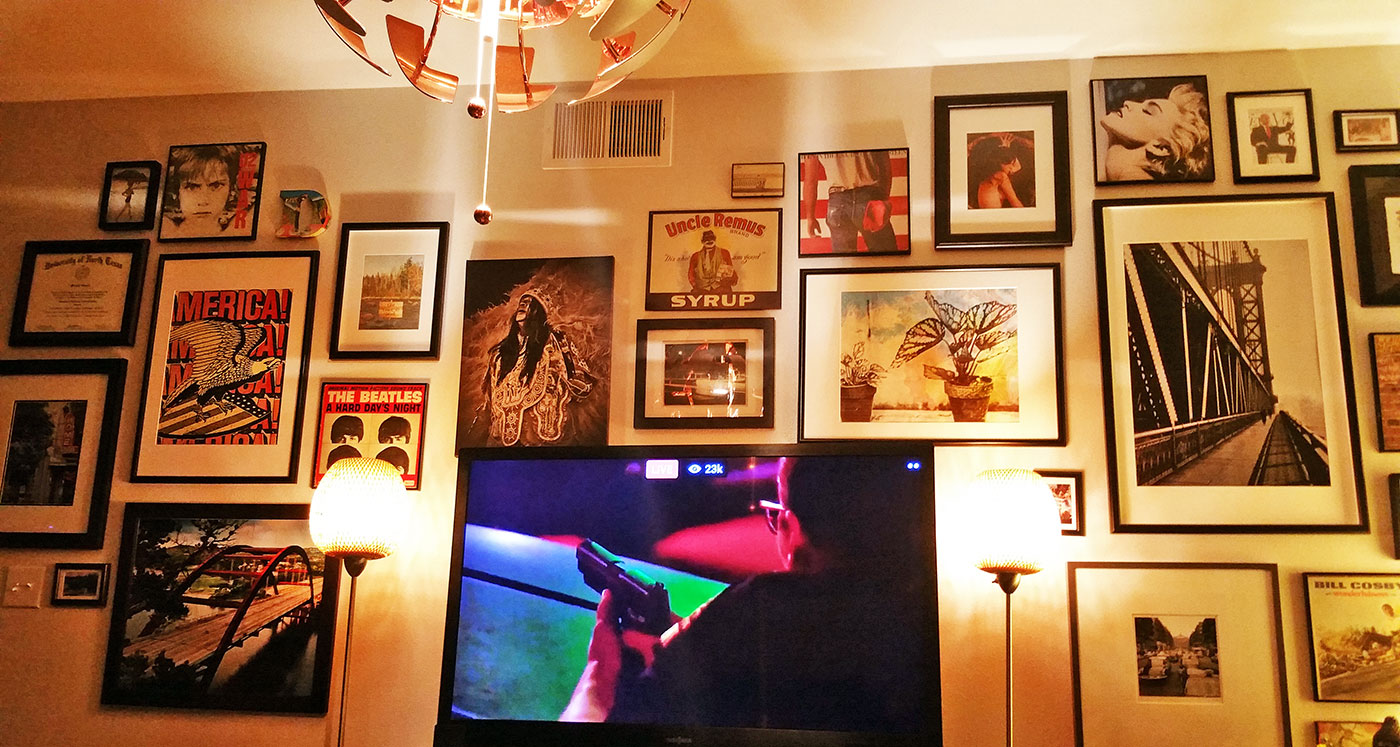
Watching a Facebook livestream of the downtown Dallas shootings.
Livestreaming also played an important role in the Dallas shootings.
Facebook livestreaming had a weird cyclical effect here: A Facebook livestream of a police shooting in Minnesota prompts a protest and mass shooting in Dallas that also gets livestreamed. The network’s violent content produces more violent content.
It’s strange, self-perpetuating cycle which bypasses media outlets, commentators, and common sense.
Hopefully it’s a cycle that doesn’t continue.
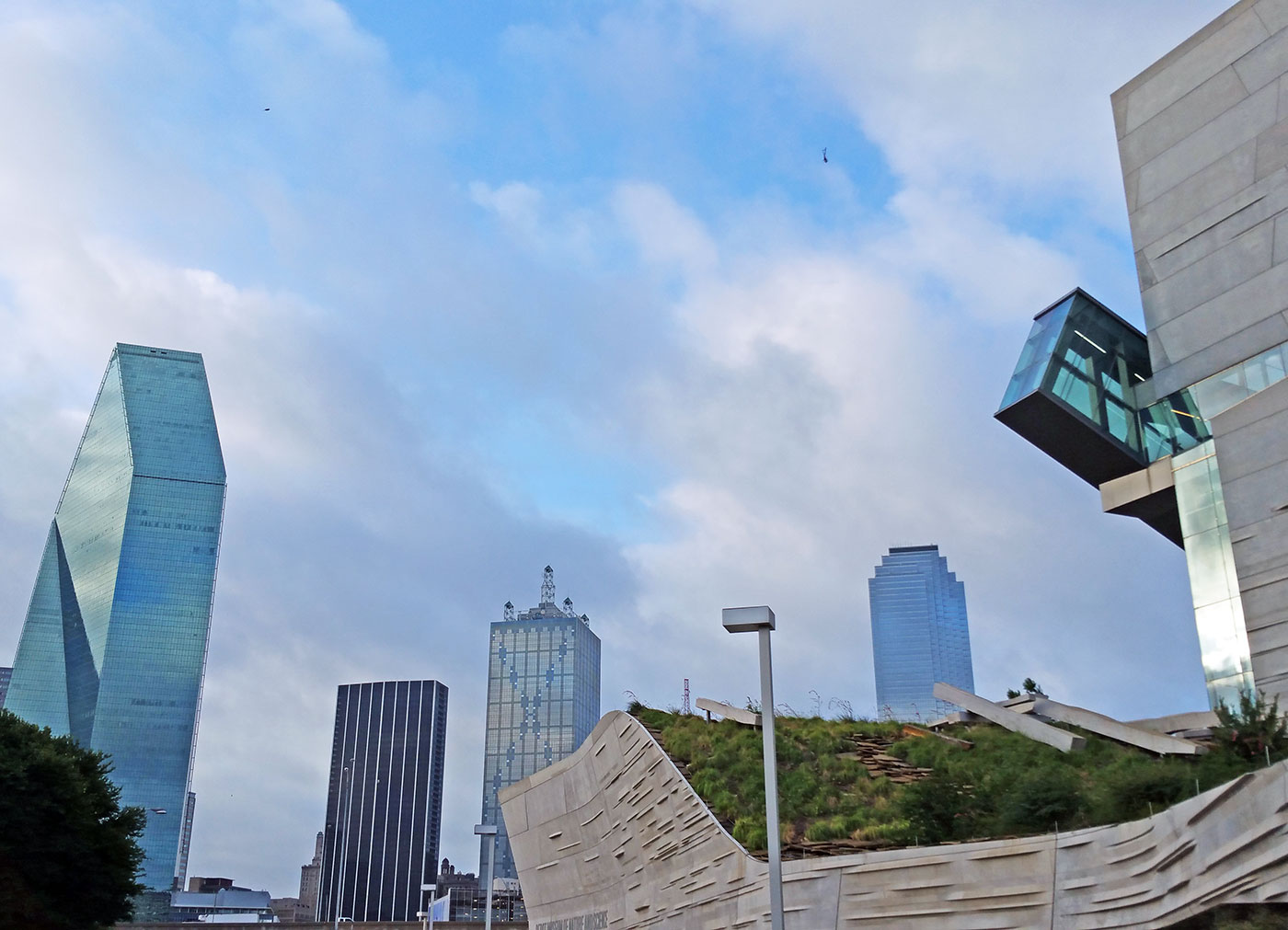
Downtown Dallas the day after the shootings. There are helicopters in the air.


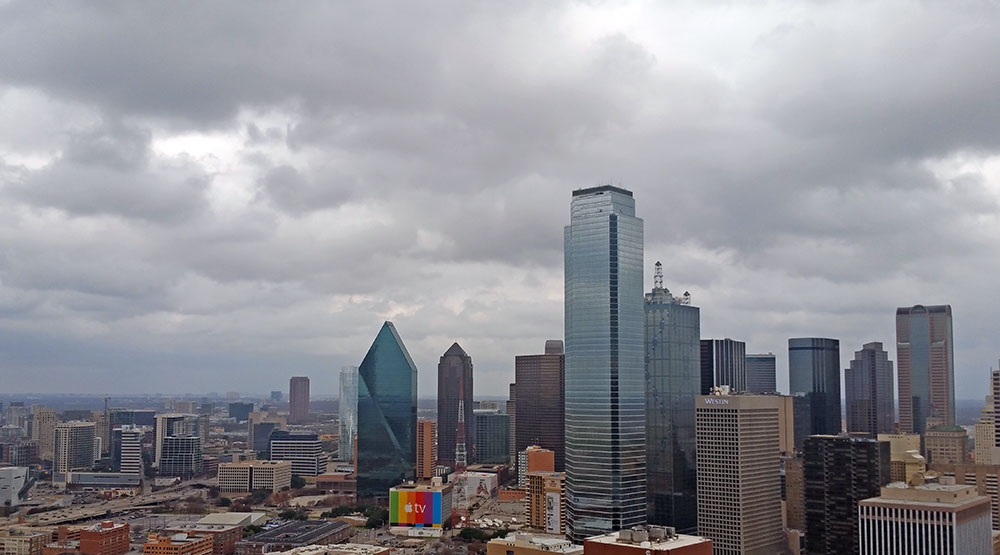
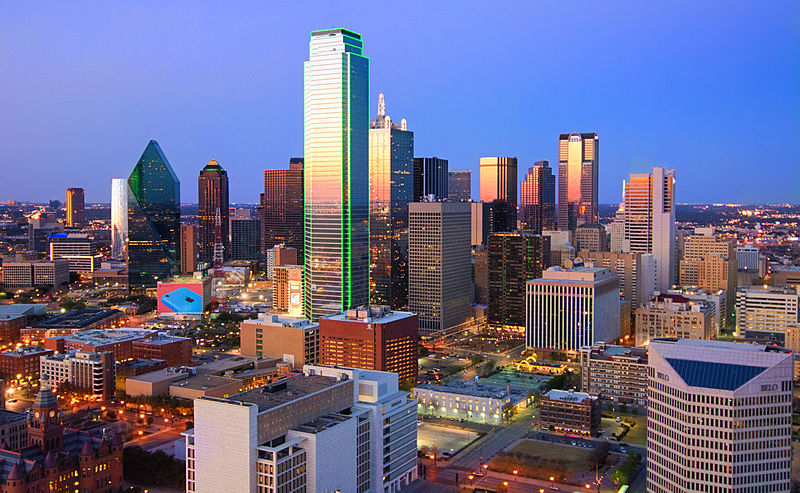
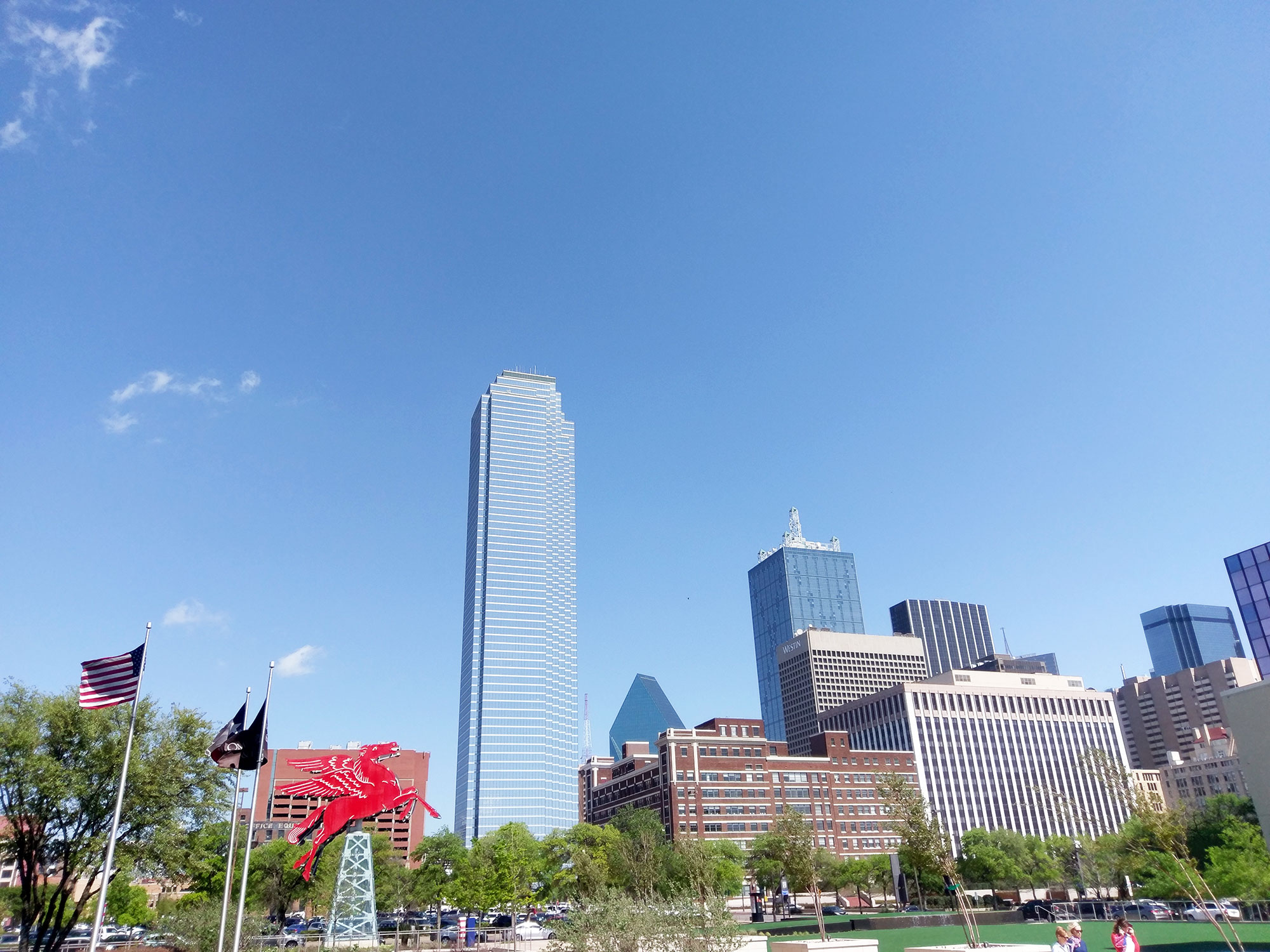
No Comments